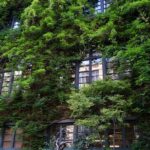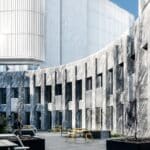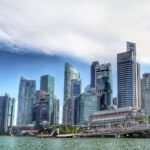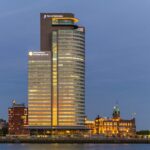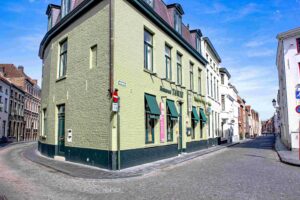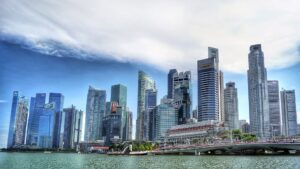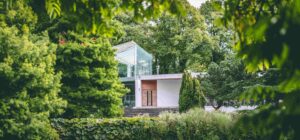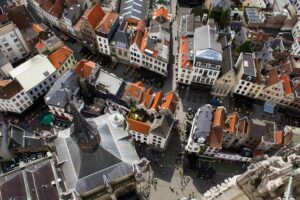
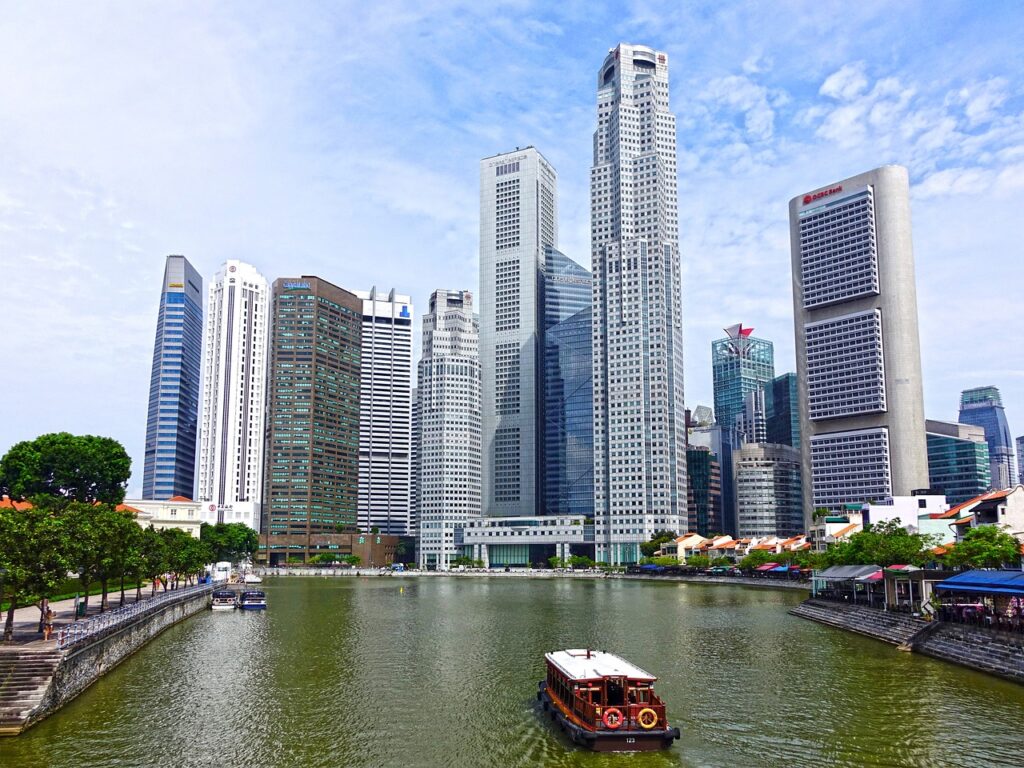
Navigating the sustainable real estate landscape in Singapore: Latest regulations and policy changes
Singapore has long been recognized as a global hub for sustainable real estate and the built environment. With its commitment to environmental sustainability, urban planning, and cutting-edge technology, the city-state has continually sought to stay ahead of the curve when it comes to creating environmentally friendly and resilient structures. To maintain this leadership position, Singapore regularly updates its regulations and policies in response to changing global environmental concerns and technological advancements.
This article will explore the latest regulations for sustainable real estate and the built environment in Singapore, including policy changes that have taken place and their implications for real estate owners and operators.
1. Green Mark Certification
One of the cornerstones of Singapore’s sustainable real estate initiatives is the Green Mark Certification program. Administered by the Building and Construction Authority (BCA), the Green Mark Certification has undergone significant updates in recent years to reflect evolving sustainability standards. In particular, the Green Mark for Non-Residential Buildings (GMNRB) and Green Mark for Residential Buildings (GMRB) have seen important changes:
- Mandatory Minimum Energy Performance Standards (MEPS): Singapore introduced mandatory MEPS for GMNRB and GMRB for the 2015 version of Green Mark. These standards aim to ensure that new buildings and existing buildings meet specific energy efficiency requirements, reducing their carbon footprint. The new Green Mark 2021 no longer uses GMNRB and GMRB, except for the maintainability badge.
The minimum energy performance standards are applicable to new buildings and existing buildings undergoing major retrofits and/or major energy use change. - Regulatory Requirements for Existing Buildings: The BCA has also set regulatory requirements for existing buildingsi. These requirements are designed to encourage building owners to improve the energy efficiency and environmental performance of their buildings.
- Net Zero Carbon Buildings: In alignment with global efforts to combat climate change, Singapore has set ambitious targets for net-zero buildings by 2030. Buildings seeking Green Mark certification must now demonstrate a commitment to reducing their carbon emissions to zero or offsetting them through renewable energy sources and carbon credits.

GM: 2021 is positioned to recognize performance that is above mandatory, regulated standards, that include robust levels of energy efficiency, indoor air quality, greenery provision, active mobility considerations, materials and waste management and water efficiency.
* SLE = Super Low Energy
2. BCA’s Green Mark is the backbone of the Singapore Green Building Masterplan (SGBMP)
To accelerate the transition to a sustainable built environment, the Building and Construction Authority (BCA) and Singapore Green Building Council have worked together to develop the next edition of the Singapore Green Building Master Plan (SGBMP). This plan outlines a roadmap for achieving net-zero energy consumption in new and existing buildings. Key components of the SGBMP include:
- Energy Efficiency Requirements: The SGBMP includes updated energy efficiency requirements for all buildings, promoting the use of smart technologies, energy-efficient HVAC systems, and renewable energy sources.
- Building Retrofitting: Owners of existing buildings are encouraged to retrofit their properties to significantly improve energy efficiency and reduce carbon emissions. Financial incentives, grants, and tax benefits are available to support these efforts.
3. Super Low Energy (SLE) Building programme:
The SLE Building programme is a government-led initiative to encourage the development of ultra-low energy buildings in Singapore. Buildings that achieve the SLE standard are required to meet even more stringent requirements than the Green Mark Platinum standard in terms of energy efficiency. Whilst Green Mark looks beyond energy, SLE is focused only on energy performance.
4. Building Information Modelling (BIM):
The BCA is also promoting the use of Building Information Modelling (BIM) in the built environment. BIM is a digital tool that can be used to create a virtual model of a building. This model can be used to simulate the performance of the building and identify potential areas for improvement.
5. Sustainable Development Code
The Sustainable Development Code (SDC) is a crucial document guiding urban planning and development in Singapore. Updated periodically to reflect evolving sustainability priorities, the SDC now emphasizes the following key aspects:
- Biodiversity and Greenery: Singapore recognizes the importance of preserving its natural environment. The SDC encourages developers to incorporate greenery and biodiversity features into their projects, such as rooftop gardens and vertical green walls.
- Sustainable Transportation: To reduce carbon emissions, the SDC promotes sustainable transportation options, including cycling infrastructure, electric vehicle charging stations, and pedestrian-friendly urban designs.
6. Smart and Resilient Buildings
In response to the growing threat of climate change and its impact on the built environment, Singapore has implemented regulations to ensure the resilience of its buildings:
- Flood-Resilient Design: Developers must now incorporate flood-resilient design features into their projects, including elevated structures, flood barriers, and advanced drainage systems.
- Smart Building Technologies: Singapore encourages the adoption of smart building technologies, including real-time monitoring systems, to enhance the efficiency and safety of buildings.
7. Circular Economy Approach
Singapore is increasingly promoting a circular economy approach in the construction and real estate sectors. Key regulations and initiatives include:
- Construction Waste Management: Stricter regulations require construction companies to minimize waste generation and promote recycling and reuse of materials.
- Sustainable Materials: The government encourages the use of sustainable and locally sourced materials in construction projects to reduce the environmental footprint.

Critical Policy Decisions
The following are some of the critical policy decisions that may directly affect Singapore’s real estate owners and operators:
- The increase in scoring thresholds for the Green Mark Scheme. This will make it more challenging for buildings to achieve a high rating and will require building owners to invest in more sustainable design and construction practices.
- The introduction of new requirements for the use of sustainable building materials. This will encourage building owners to use materials that have a lower environmental impact.
- The requirement for new buildings to submit EPCs as part of the Green Mark application process. This will help to ensure that buildings are operating efficiently and are not wasting energy.
These policy decisions are designed to make Singapore’s built environment more sustainable. They will have a significant impact on real estate owners and operators, who will need to adapt their practices to meet the new requirements.
To summarize
- Singapore’s commitment to sustainability in real estate and the built environment remains unwavering, as evidenced by the latest regulations and policy changes. The emphasis on Green Mark Certification, and the pilot projects on Zero Energy Building, the Sustainable Development Code, resilient building design, and the circular economy approach underscores the government’s dedication to environmental conservation and climate resilience.
- Real estate owners and operators in Singapore must stay abreast of these changes to ensure compliance and seize opportunities in the rapidly evolving sustainable real estate landscape.
- They will need to adapt their practices to meet the new requirements. However, the long-term benefits of sustainable real estate are clear. By investing in sustainable buildings, real estate owners and operators can help to reduce their environmental impact and improve their bottom line.
- By embracing these regulations and fostering innovation, Singapore is poised to maintain its status as a global leader in sustainable urban development.
Green Buildings Tool supports sustainability tracking and carbon reporting
At CFP Green Buildings we have developed a platform that provides such simple, large-scale, and specific levels of insight. Entire portfolios, but also individual objects can be processed. Our Green Buildings Tool recognizes the type of property, retrieves the EPC and sustainability or carbon score, identifies the most relevant sustainability measures, and calculates the business case for the entire portfolio and per building or house.

Sustainability efforts allow businesses to demonstrate their leading role in the sustainability agenda, and the Green Buildings Tool provides a solution for sustainability reporting, as it offers insights into current and potential carbon emissions and energy efficiency. This allows financial institutions to set sustainability targets and comply with PCAF and other reporting standards, as well as use the Tool alongside CRREM assessments.
Feel free to reach out for a free demo to see how we can add value to your business and make a global impact.
Want to know more about CFP Green Buildings?
Let us introduce ourselves through a video.
